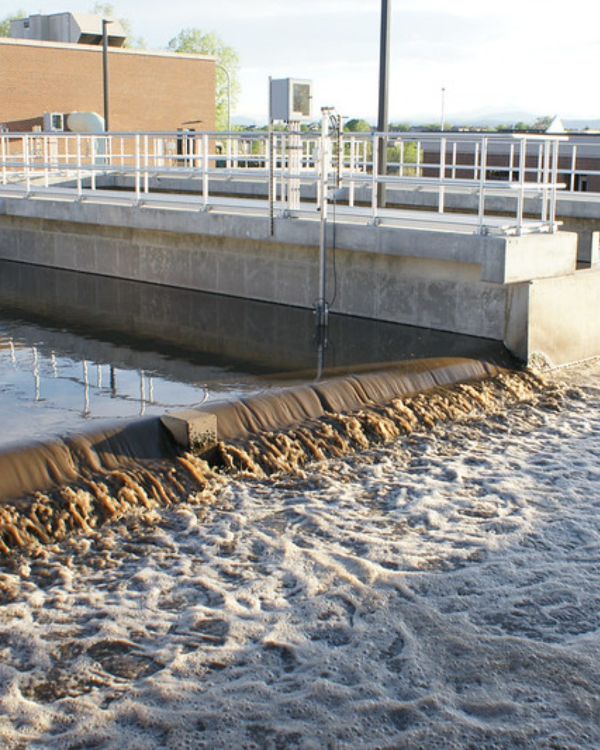Per- and Polyfluoroalkyl Substances (PFAS)#
Per- and polyfluoroalkyl substances (PFAS) are a group of thousands of man-made chemicals that include Perfluorooctanoic Acid (PFOA) and Perfluorooctane Sulfonate (PFOS). One common and concerning characteristic of PFAS is that the compounds may break down slowly and build up in people, animals, and the environment over time.
Current scientific research suggests that exposure to certain PFAS may lead to adverse health outcomes. However, research is still ongoing to determine how different levels of exposure to different PFAS can lead to health effects. Research is also underway to better understand the health effects associated with low levels of exposure to PFAS over long periods of time, especially in children.
PFAS are used to make carpets, clothing, furniture and cookware water-resistant to water, grease-resistant, and stain-resistant. These substances are also used to fight fires at airfields and are included in some industrial processes. Wildfire-fighting retardants do not contain PFAS.
PFAS enter the natural waterways when people use, wash, rinse or clean products containing the chemicals. Those chemicals then drain into natural waterways through a sewer system.
Fort Collins Utilities is committed to protecting public health and the environment and will continue to monitor and test for PFAS in raw and drinking water in accordance with state and federal guidelines within our service area. If water is being supplied by another provider, please contact that provider for more information.
What are common sources of PFAS?
- Shampoo
- Non-stick cookware
- Stain-resistance product
- Paints
- Pesticides
- Fast food packaging
- Certain textiles
- Makeup and personal care products
- Manufacturing facilities
- Industrial processes
Where have PFAS been Found?
- Rainwater
- Wastewater
- Some drinking waters (our water is safe to drink)
- Soil
- Air
- Food
- Dust
- In our bodies

Source control is one of the most cost-effective ways to reduce PFAS across Colorado. Utilities actively monitors for PFAS in our drinking water sources. Watershed monitoring allows us to measure the chemicals that enter the water system before it arrives in Fort Collins. Understanding where PFAS comes from helps us protect our drinking water quality.
What Utilities is doing:
- Providing the latest data and other pertinent information online.
- Keeping up with activities in the Cache la Poudre and Horsetooth watersheds.
- Staying updated on EPA and CDPHE PFAS direction and activities.
Maximum Contaminant Levels#

The Environmental Protection Agency (EPA) is responsible for overseeing the National Primary Drinking Water Regulations. These regulations establish what are called “maximum contaminant levels" (MCLs) for specific substances. Public water utilities are required to monitor for these regulated substances. MCLs were published by EPA on April 10, 2024.
This new drinking water regulation requires us to perform initial monitoring, ongoing monitoring (frequency based on initial results), and gives us until 2029 to implement solutions if results are above the limits.
While we don’t expect these new drinking water regulations to cause significant impact on our drinking water treatment, they will likely be used when developing water quality stream standards, which then inform permit limits for our wastewater treatment facilities.
Health advisories are:#
- Non-enforceable
- Established to protect all people, including sensitive populations, from exposure throughout their lives.
- Calculated to offer a margin of protection
- Taking into account other potential sources of exposure beyond drinking water
- Based on human and animal studies

Wastewater treatment plants, including the treatment and solids land application processes, do not generate new PFAS but they come into contact with PFAS through the wastewater entering the plant.
Key Facts:
- PFAS cannot be removed from wastewater or biosolids using standard treatment.
- Our current monitoring of local biosolids shows PFAS levels well below the threshold of concern set by the State of Colorado.
- We are committed to participating in ongoing studies, monitoring and outreach activities to improve our wastewater management practices.
The best way to limit your is using products that don't have PFAS! Review the list below.
Frequently Asked Questions (FAQs)#
-
PFAS
2024 MCL (PPT)
2022 Health Advisory level (PPT)
2016 Health Advisory level (PPT)
2009 Health Advisory level (PPT)
PFOA
4
0.004
70
400,000
PFOS
4
0.02
70
200,000
Combined PFOA & PFOS
No MCL
No Advisory
70
No Advisory
PFBS
No MCL*
2,000
No Advisory
No Advisory
HFPO
10
10
No Advisory
No Advisory
PFNA
10
No Advisory
No Advisory
No Advisory
PFHxS
10
No Advisory
No Advisory
No Advisory
Combination of PFHxS, PFNA, HFPO, PFBS
1 (unitless) Hazard Index
No Advisory
No Advisory
No Advisory
PFAS: per- and polyfluoroalkyl substances
PFOA: perfluorooctanoic acid
PFOS: perfluorooctanesulfonic acid
PFBS: perfluorobutanesulfonic acid
HFPO: hexafluoropropylene oxide-dimer acid (also known as GenX)
PFNA: Perfluorononanoic acid
PFHxS: Perfluorohexanesulfonic acid
PPT: parts per trillion (the amount equal to one drop of detergent in enough dishwater to fill a string of railroad tank cars ten miles long)
Health Advisory: The level at which adverse health effects are not anticipated to occur; these are not enforceable.
MCL: The highest level of a contaminant allowed in drinking water. These are enforceable-meaning drinking water utilities must monitor them and meet them.
Hazard Index: Used to understand health risk from a chemical mixture and is made up of a sum of fractions of each compound.
*No individual MCL for this compound but is a part of a combined Hazard Index with a MCL.
-
- 2013: We tested our finished drinking water for six per-fluorinated compounds as part of the EPA’s Unregulated Contaminant Monitoring Rule (UCMR3) program. None of the compounds were detected.
- 2016: We developed a Source Water Protection Plan, designed to identify, and mitigate threats to the Poudre River and Horsetooth Reservoir. As part of this plan, Utilities conducted a review of potential sources of PFAS in our drinking water supplies. There were no identified industrial sources of PFAS within the watersheds and no past or existing storage facilities were identified through a State records review. It is possible that sources of treated municipal wastewater that are upstream of Horsetooth Reservoir may contribute PFAS from household and commercial sources.
- 2020: Fort Collins Utilities participated in the Colorado Department of Public Health and Environment’s (CDPHE) PFAS voluntary sampling program. This program was designed to help water providers across Colorado and the communities they serve to determine if PFAS are present in their drinking water. As part of this program, one finished water sample was collected at the point of entry to the Fort Collins Utilities’ water distribution system. Total PFAS were detected in the sample at 0.56 parts per trillion (ppt) were detected in the sample, which was below the EPA Health Advisory level of 70 ppt at that time. This result was qualified, indicating that it was below the lab's ability to accurately quantify the result. The detection of PFAS in 2020 could have been due to improvements in detection technologies since the analysis in 2013, rather than the occurrence of a new PFAS source in our watersheds. It might also be due to sample contamination because of the ubiquity of the substances in the environment and the difficulty of sampling these compounds without contaminating the samples. It is common to collect a field blank sample to monitor contamination from the sampling process, but none are associated with this sampling event. PFAS analytical results for this program can be found on the CDPHE webpage.
- 2022: Following the release of the Health Advisory levels, Fort Collins Utilities sampled its two raw water supplies and finished drinking water. No PFAS were detected in these samples.
- 2023: Fort Collins Utilities re-sampled its two raw water supplies and no PFAS were detected in these samples.
- 2013: We tested our finished drinking water for six per-fluorinated compounds as part of the EPA’s Unregulated Contaminant Monitoring Rule (UCMR3) program. None of the compounds were detected.
-
Studies have found exposure to PFAS may:
- Impact the immune system
- Impact the cardiovascular system
- Lead to decreased birth weight
- Lead to cancer
More information on the health effects of PFAS can be found with the CDC/ATSDR.
-
While this is a concern, it is not a crisis. The lower your exposure, the lower your risk. You do not need to stop drinking tap water.
Fort Collins Utilities strives to provide clean, safe, good-tasting drinking water to its customers. We proactively test the drinking water and monitor our watersheds for sources of PFAS, including the Cache la Poudre River and the Colorado-Big Thompson (CBT) project (Horsetooth Reservoir).
PFAS have not been identified in either of Utilities' source waters; however, it is known that wastewater discharges can be a source of PFAS that passes through a treatment plant to be returned to the local waterways for downstream users.
-
- Boiling, freezing, or letting water stand does not reduce PFAS levels.
- Even though no detection has been shown in our drinking water, if concerned, reduce exposure by using water treated by an in-home water treatment filter certified to lower PFAS levels.
- Neither the EPA nor the CDPHE recommend bottled water unless it has been treated with reverse osmosis. Bottled water is as likely to contain PFAS as tap water.
- Choosing PFAS-free consumer products.
- If you have specific health concerns, consult your doctor.
-
Chemical compounds, like PFAS, are often manufactured to make life easier, better or safer. But over time, studies may reveal unintended consequences.
-
Research and information on PFAS is continually evolving and there is still a lot not known, including:
- Affordable methods for managing and disposing of PFAS
- How harmful PFAS are to people and the environment
- The extent of human exposure to PFAS
- How to accurately and precisely detect and measure very low levels of PFAS.
-
- 2000-2002 - PFOS was voluntarily phased out of production in the U.S. by its primary manufacturer.
- 2006-2015 - Eight major companies phased out their production and use of PFOA, and the chemicals that degrade to PFOA.
- 2012 - EPA included PFOA and PFOS on the list of contaminants that water systems were required to monitor under the Third Unregulated Contaminant Monitoring Rule.
- 2021 - EPA committed to establishing national primary drinking water regulations for PFOA and PFOS.
- In 2022, Colorado passed a ban on “intentionally added” PFAS in consumer products, which will be phased in from 2024 to 2030.
- On April 10, 2024, EPA released drinking water regulations placing MCL limits for six PFAS compounds.
- 2025 - Water utilities will be required to monitor 29 PFAS under the Fifth Unregulated Contaminant Monitoring Rule.
More Information#
- Environmental Protection Agency (EPA): epa.gov/pfas
- Colorado Department of Health and Environment (CDPHE): colorado.gov/cdphe/pfas
National drinking water quality standards are set by the EPA and administered in Colorado by the CDPHE. To express concerns regarding PFAS, you may contact the following:
- EPA
- CDPHE – Water Quality Division
- Local state and federal elected representatives using the Find My Legislator tool at leg.colorado.gov/find-my-legislator
Did You Know?
The Efficiency Works store sells water- and energy-saving products, including LED lighting, smart thermostats and showerheads.
You can save water by partially fill the sink with warm water to rinse the razor blade when shaving.
Fats, oils and grease can clog the pipes in your home and the City’s wastewater system. Don’t put them down the drain. Toss them instead.